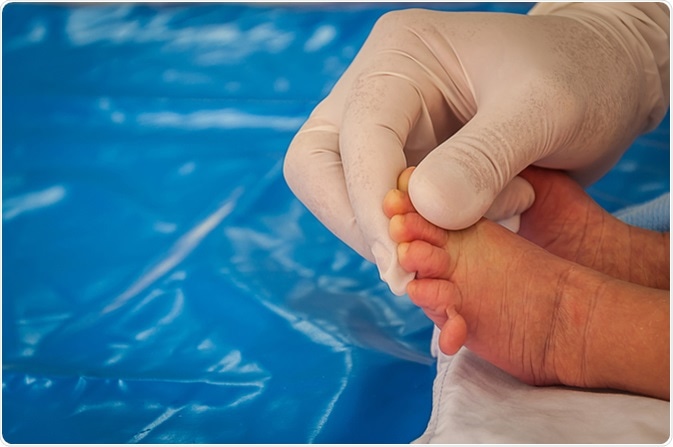Site Under Development, Content Population and SEO, Soft Launch 1st January 2020
The condition in which people possess an extra finger or toe, i.e., a supernumerary digit, is called Polydactyly.
This digit may look like a small skin (nubbin), a raised bump, or sometimes a completely developed finger or toe. Often, it is small in size and not well formed. The nubbin is connected to the foot or hand via a narrow stalk of tissue.
The better formed digit has all the essential structures such as bone, muscles, blood vessels, and nerves that are closely connected with the hand or feet.
The exact cause for the growth of an extra digit is unknown; however, it may be genetic or associated with different syndromes.

This condition happens in 1 out of 1,000 children. Usually, surgery may be a choice of the individual or of parents (for minors), unless it causes certain complications that lead to:
The surgical methods of removing extra digits are classified into two, based on the complexity of the connection of the digit (slightly connected or deeply connected with nerves or bones) to the hands and feet.
Usually, the extra digits are removed surgically in early childhood (infant stages) to avoid complexities during further growth.
The objective of this method is to provide hands and/or feet which look and function as normal. Looking at it practically, removing the extra digits will make the child’s foot fit well into his shoes.
This method is used based on the complexity of the digit, i.e., the presence of bone, blood vessels, and nerve. X-ray technology is used to determine the complexity in each case.
After confirmation of the complexity, the surgical procedure is as follows:
In some cases, more than one procedure is carried out to make the hand look normal and function well.
Children who have undergone more complex surgeries may require occupational therapy, based on their age and health condition.
This therapy helps them to prevent stiffness, and perform their daily activities normally.
Antibiotics are prescribed if the operation site becomes infected.
A scar may form after removal of the extra finger; however, this is normal and fades gradually with time.
There are two typical methods under this category - Use of Vascular clip and use of Ayurvedic cutting seton. Both the methods are used only when the extra digit has no bone and nerves in it.
Use of Vascular clip: Once it is confirmed that there is no bone or nerve in the extra digit, a clip is attached to the joined end, and a bandage is wound around it. This is a simple process. After fixing of the clip, the blood flow in the region of the digit is severed. When the blood flow stops completely, the digit will automatically fall off (in a couple of weeks). The bandages are removed after that.
Use of Ayurvedic cutting seton: “Ayurvedic-medicated thread” is helpful for children whose parents are not favorable for surgery and prefer an alternative treatment. The thread used in this method is a barber's surgical linen thread of size 20, which is multicoated with herbal alkaline drugs such as, Haridra powder (Curcuma longa), Snuhi Kshir (latex of Euphorbia nerifolia), and Apamarga Kshar (alkali of Achyranthes aspera plant).
It is normally used to remove unwanted tissues, pedunculated growth, polyps, external piles, etc., as it has caustic properties. It is also used to remove polydactyly.
The base of the digit is tied with the medicated thread and the extra finger starts necrosing within 24 hours, resulting in its fall in just 9 days, with minimal scar formation. The thread has excellent antiseptic properties, and therefore, promotes rapid healing. The thread is known to possess the property of simultaneous cutting and healing.